Elements of Nutrition: Spotlight on Iron

Our resident nutritionist and naturopath, Buffy Ellen irons out the misconceptions about iron in a vegan diet.
Last issue we talked about protein, one of the mostly hotly questioned macronutrients when you’re transitioning to a plant-based diet. This month we’re crossing to the other side of the nutrient border, to our first micronutrient of note — iron.
Iron is the most common nutrient deficiency in the developed world but, contrary to popular belief, it is not more common amongst vegans and vegetarians than omnivorous eaters. In fact, research has shown that higher meat-based iron consumption is significantly associated with a much greater risk of type 2 diabetes. Furthermore, meat only contributes around 40% of the iron an omnivore absorbs, with plant-based sources making up the lion’s share (or gorilla’s, as the case may be). Therefore, plant-based sources are important for all of us, regardless of where you’re at on your plant-based journey.
Let’s dive in, so you’re ready to answer all those gnarly iron-enquiring questions at your next dinner party.
What is iron?
Iron is one the key micronutrients we need, and comes in two forms:
Heme iron:
- Only found in meat (2/3 the iron in meat).
- More immediately bioavailable, as it’s already been converted by animals.
- Too much is a bad thing, as it’s significantly associated with higher risk of type 2 diabetes.
Non-heme iron:
- Found in meat & plants (1/3 the iron in meat, 100% of plants).
- Needs to go through a conversion process before we can fully absorb it.
Even for the average omnivore, 90% of iron consumed and 60% of iron absorbed comes from non-heme iron.
So plant-based sources are important to consider.
Why we need it
- To produce haemoglobin in our red blood cells, which transports oxygen out to our organs.
- For a healthy immune response.
- As a coenzyme for our body’s biochemical reactions.
Without enough you can feel tired, experience shortness of breath, and be more susceptible to infection.
How much iron do you need per day?
Infants (less than 1yr) 11mg
Children (1-13yrs) 8-10mg
Teenage (14-18yrs) males 11mg
Teenage (14-18yrs) females 15mg
Males (over 18yrs) 8mg
Females (19-50yrs) 18mg
Females (over 50yrs) 8mg
When breastfeeding 9mg
When pregnant 27mg
Based on differing absorption rates, plant-based eaters should eat 1.8x these amounts
Causes of deficiency
Iron deficiency anaemia is the most common nutrient deficiency in the world, with 20-30% of children and women affected. Why?
- Blood loss: periods, surgery, or other bleeding.
- Greater requirements: children, menstruating and pregnant women, athletes.
- Insufficient dietary intake: not enough iron-containing foods.
- Impaired absorption: due to Celiac/Crohns/UC, insufficient nutrients to help absorption, or foods which reduce it.
How to maximise absorption
- Co-consume vitamin C foods: oranges, broccoli, tomato, capsicum, kiwifruit, strawberries, lemons and any other citrus.
- Avoid tea, coffee, wine and beer with meals: they contain nutrient inhibitors such as tannins, oxalates, and phytates. Drink them 30 minutes to one hour outside of meals, or if your iron is low, try reducing total consumption for a period
- Soak, sprout, ferment or cook: reduces nutrient inhibitors also present on the outside of many nuts, seeds, whole grains and legumes.
Remember, iron deficiency is not more common in vegans and is easily avoided as long as you eat a varied diet of whole grains, legumes, nuts and seeds, fruits, and vegetables.
Buffy is one of Australasia’s leading plant-based nutritionists and naturopaths and is also the founder of the New Zealand food blog, Be Good Organics.
For more plant-based recipes, follow Buffy on Instagram and Facebook @begoodorganics,
or find her at begoodorganics.com.
Top 20 Plant-based Food for Iron per 100g
- Dried Spices: 10-120g
- Marmite 36g
- Spirulina powder 29g
- Sesame seeds (unhulled) 15g
- Cocoa powder 14g
- Dark chocolate (70-85% cocoa solids) 12g
- Mint (fresh) 12g
- Wheat bran 11g
- Acai powder 10g
- Sun-dried tomatoes 9g
- Tahini 9g
- Pumpkin seeds 9g
- Hemp seeds 8g
- Chia seeds 8g
- Potatoes (baked with skin) 7g
- Goji berries 7g
- Cashew nuts 7g
- Sesame seeds (hulled) 6g
- Dried apricots 6g
- Parsley (fresh) 6g
Honourable mentions: tofu, beans, lentils, chickpeas, peas, flaxseeds, sunflower seeds, hazelnuts, peanut butter, almonds, rye, oats, quinoa, spelt, buckwheat, and spinach. All of which contain more total iron than 100g of red meat (3mg).
Aotearoa Vegan and Plant Based Living Magazine
This article was sourced from the Winter 2021 edition of The Vegan Society magazine.
Order your own current copy in print or pdf or browse past editions.
Disclaimer
The articles we present in our magazine and blog have been written by many authors and are are not necessarily the views and policies of the Vegan Society.
Enjoyed reading this? We think you'll enjoy these articles:
Kaupapa Vegan: The Source of Love
Kaupapa Vegan: The Source of Love Philip (Piripi) McKibbin is a writer of Pākehā and Māori (Ngāi Tahu) descent and a committed …
All Ages: Young, vegan, and broke?
All Ages: Young, vegan, and broke? Maja Skilling shares her tips for surviving and thriving as a young vegan uni student on …
Plant Based Building
Plant Based Building Martin Ulenberg, an architect specialising in ecologically sensitive design, explains how our modern construction practices are taking a toll …



